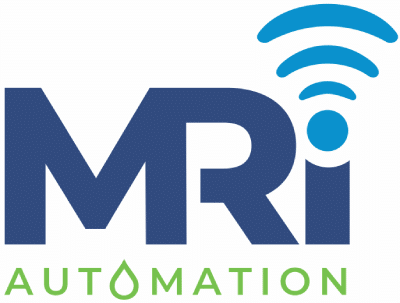Programmable Logic Controllers (PLCs) are the brains of many industrial operations. When they fail, your entire process can grind to a halt. Knowing how to quickly diagnose the issue is key to keeping downtime (and costs) to a minimum.
At MRI Automation, we’ve helped operators across South Texas and the Eagle Ford region get their systems back online—fast. Here’s a practical guide to identifying common PLC problems before they become expensive shutdowns.
1. Power Supply Issues
Before diving into complex diagnostics, check the basics. A failed or unstable power supply is one of the most common (and most overlooked) culprits.
What to look for:
-
No LED indicators or screen activity on the PLC
-
Intermittent reboots
-
Voltage fluctuations at the terminals
What to do:
Use a multimeter to verify input voltage. If you’re getting fluctuating readings or no power at all, check upstream breakers, power conditioning devices, and grounding.
2. Communication Failures
If your PLC is online but not talking to HMIs, SCADA systems, or I/O modules, you may be facing a network communication issue.
Common causes:
-
Loose or damaged Ethernet or serial cables
-
Faulty switches or routers
-
Incorrect IP addresses or baud rate settings
-
Configuration conflicts after firmware updates
What to try:
-
Ping the device from your laptop
-
Check port LEDs and physical connections
-
Review communication settings in the software
-
Swap cables to rule out physical damage
3. I/O Module Faults
Sometimes, the PLC is healthy—but the connected sensors and actuators aren’t. Faulty input/output modules can misreport data, causing logic failures.
Symptoms may include:
-
Inputs not registering changes
-
Outputs not energizing when expected
-
Blown fuses or short circuits
-
Diagnostic fault LEDs on the module
Quick checks:
-
Use a simulator or jumper to manually trigger inputs
-
Test outputs with a meter or test light
-
Look for burned or damaged components on the module
4. Faulty Logic or Program Corruption
Bad programming—or a corrupted file—can cause erratic or unpredictable behavior. This is often harder to spot, especially in systems that “kind of” work.
Red flags include:
-
Sequences that don’t complete
-
Timers or counters stuck
-
Outputs turning on unexpectedly
-
Random system resets
Recommended action:
-
Check error logs or diagnostic flags
-
Compare the current program to the master copy
-
Re-upload or recompile the logic from a known-good file
-
Validate recent changes against expected performance
5. Environmental Factors
Texas heat, humidity, and dust are no friend to electronics. Many PLC issues are ultimately caused by poor environmental conditions.
Watch for:
-
Overheated panels or blocked ventilation
-
Condensation inside enclosures
-
Corrosion on terminals
-
Dust or insects interfering with contacts
Prevention tips:
-
Use climate-controlled panels
-
Install filters and seals for outdoor cabinets
-
Schedule periodic physical inspections, especially in unmanned locations
When to Call in the Experts
While many basic issues can be resolved in the field, complex logic errors or recurring faults may require expert analysis. MRI Automation offers rapid-response troubleshooting services to minimize downtime and restore full system functionality. We can also review your programming logic and panel design to prevent future failures.
Serving South Texas with Control System Expertise
From RTUs and PLCs to SCADA and HMI interfaces, our team delivers hands-on support and fast solutions to keep your operations running. Whether you’re dealing with a critical failure or want to prevent one, we’re ready to help.
Need help troubleshooting your PLC system?
Contact MRI Automation to schedule a service call or consultation.
